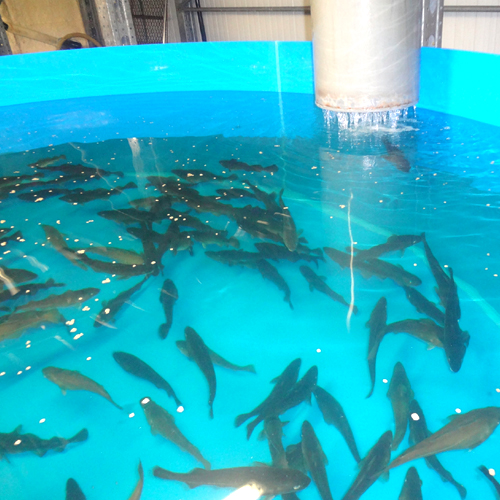Conventional means of solids removal, such as
sponge/ perlon floss filters and sand filters address the removal of coarse
settleable and filterable solids, but not the removal of fine colloidal
solids. Similarly, nitrifying bacteria in bio-filters remove dissolved
ammonia and nitrite, but not all dissolved organic wastes. As an aquarium
matures, the accumulation of dissolved organic colloidal solids increases.
This organic buildup decreases the performance of the nitrifying bacteria
that convert nitrite to nitrate, thus causing harming nitrite buildup. The
biochemical oxygen demand also rises, so the oxygen levels decrease over
time. These shifts in water parameters stress the aquarium inhabitants and
may even cause mortality. To reduce the necessity of large water changes,
that can change the systems chemical parameters (PH, salinity, alkalinity
etc.), there is a very efficient alternative method of breaking down these
organic wastes using a strong oxidizing agent Ozone.
Ozonated water is widely employed at aquariums,
sea parks and zoos, where it safely removes disease causing microbes or
fungus without using harsh and increasingly regulated chemicals that may
form harmful byproducts.
Use of ozone in aquaculture water treatment serves the following purposes :
-
Removal Of Fine And Colloidal
Solids
A fine and colloidal solids consist of particles
1-30 microns (mm) and 0.001 (mm) respectively. The small size of the
particles enables the solids to remain in suspension and avoid most
mechanical methods of separation. The accumulation of fine and colloidal
solids can impair bio-filter nitrification efficiencies and stress fish
stocks
Ozone removes fine and colloidal solids by causing clumping of the solids
(microflocculation), which facilitates removal by foam-fractionation,
filtration and sedimentation.
Removal Of Dissolved Organic
Compounds
Dissolved organic compounds or refractory
organics, give the water a characteristic tea-colored stain. Dissolved
organic compounds are non-biodegradable and accumulate according to feed
input, water exchange rate and the rate of solids removal. High levels of
Dissolved organic compounds can stress fish and reduce nitrification
efficiencies of the bio-filter. Ozone removes dissolved organic compounds by
:
- Oxidation into products that are more readily nitrified.
Removal Of Nitrite
Nitrite can accumulate as production intensifies
and organic loadings increase. Bacteria that process ammonia into nitrite
(Nitrosomonas spp) operates more efficiently under high organic loadings
than bacteria that process nitrite to nitrate (Nitrobacter) and levels of
nitrite rise accordingly. High levels of nitrite can be toxic to fish. Data
available for silver perch, bidyanus bidyanus indicates levels of nitrite as
low as 2.8 parts per million (ppm) can reduce growth of fingerlings by 5%.
Disinfection
The high stocking densities, associated fish
stress and increased nutrient loads found in RAS create an ideal environment
for fish pathogens. An important step in reducing the risk of disease
outbreaks in RAS is the use of standard quarantine procedures for any fish
introduced. Facilities using surface waters, including RAS and flow through
hatchery systems, are also interested in reducing the pathogens load
introduced via the source of water. The disinfection of effluent waters
introduction to the environment is also crucial to prevent the translocation
of exotic diseases.
Ozone can effectively inactivate a range of bacterial, viral, fungal and
protozoan fish pathogens. The effectiveness of Ozone treatment depends on
ozone concentration, length of ozone exposure (contact time), pathogen loads
and levels of organic matter. If high levels of organic matter are present,
the demand created by oxidizing the organic matter can make it difficult to
maintain enough residual ozone for effective disinfection.
Advantages Of Using Ozone In
Aquaculture Environment
- Ozonation oxygenates the water, reducing odor and increasing clarity,
providing more aesthetically pleasing experience.
- Ozone needs only a short span contact time, typically 10 to 30
minutes. After use, the ozone decomposes back to oxygen, leaving no
harmful residue.
- Ozone is safe-it has been certified organic and has been approved by
the FDA and USDA as food contact substance. The EPA does not require any
record-keeping or reporting of ozone use
- Use of Ozone improves water quality, accelerates the growth rate and
eliminates water-borne bacteria and viruses.
- Ozone saves water by reducing the need to draw down exhibit water to
remove solids.


